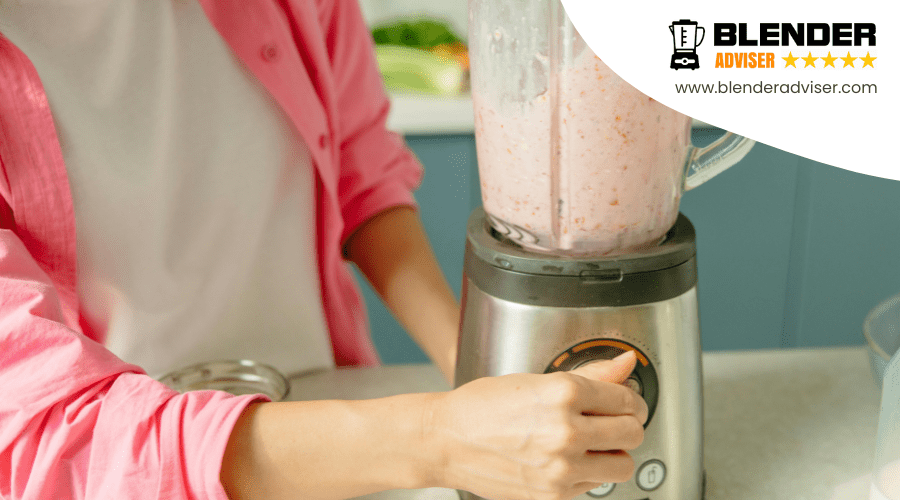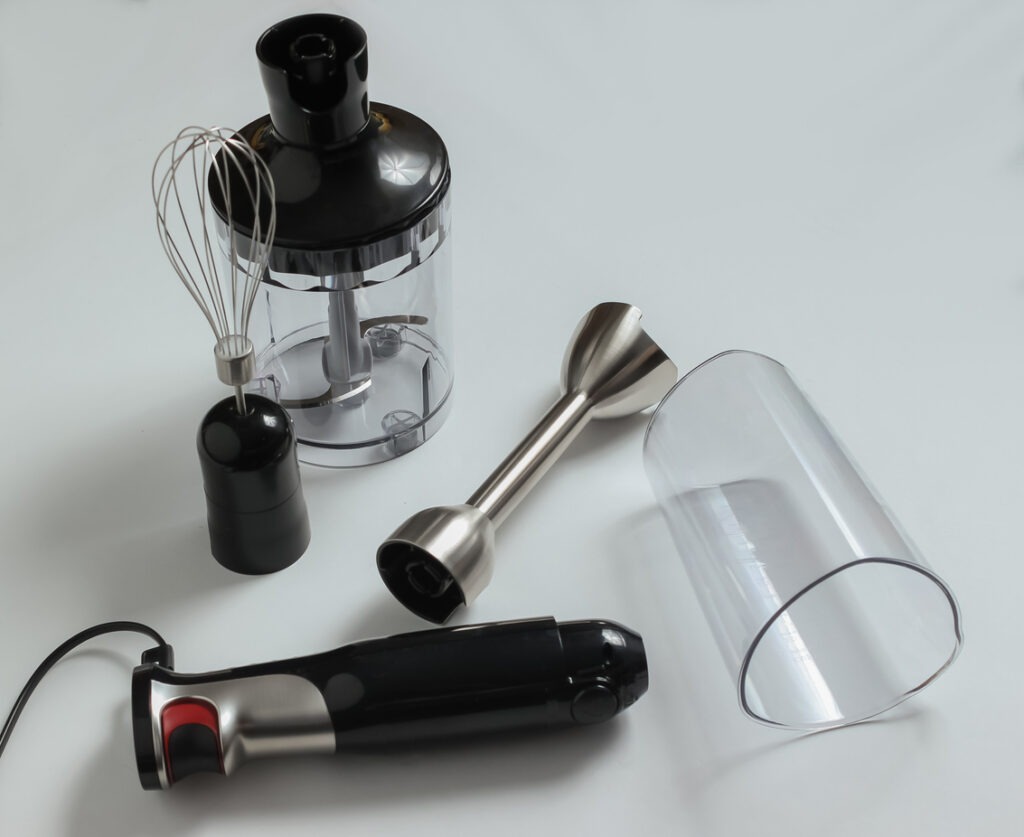So, you thought blending was just about pushing a button and hoping for the best? Think again. The art of achieving that perfectly smooth blend isn’t just a stroke of luck; it’s rooted in science, from the sharpness and design of the blades to the power behind the motor and the specific layering of your ingredients.
But here’s where it gets interesting: understanding the physics, like how cavitation and vortexes contribute to the process, can transform your concoctions from mediocre to magnificent. If you’re curious about how these elements play together to elevate your blending game, stick around. There’s more to uncover in the blend of science and culinary craft.
Blades and Precision
At the heart of every smooth blend lies the precision of blade design, with sharp edges and specific angles crafted to create an effective vortex. This isn’t just about chopping; it’s about how well-designed blades catch and blend every component of your ingredients, be they fruits, vegetables, or even ice, into a seamless blend. The magic behind this lies in the science of blade design, which is crucial for achieving that smooth texture and consistent results you’re after.
When you’re blending, you’re not just mixing ingredients together. You’re subjecting them to compressive shearing forces, courtesy of your blender’s blades. These forces are what break down your ingredients into small bits, ensuring that everything is evenly blended without any chunky surprises. Understanding how blades work to cut, shear, and blend ingredients is essential for optimal blending performance. It’s these blades, after all, that determine the efficiency and effectiveness of your blender in transforming a mix of ingredients into those smooth blends you love. So, remember, the next time you’re sipping on that perfectly smooth smoothie, it’s all thanks to the precision of blade design.
Motors and RPMs
Just as crucial as the blade’s design, the motor’s power and its RPMs are the driving forces behind your blender’s performance, directly influencing how smooth your blend turns out. The heart of your blender, the motor, is what determines the blending efficiency and power. When you’re aiming for that perfect smoothie or soup, you’re not just relying on sharp blades; you’re depending on the motor’s strength to drive those blades through your ingredients, turning them into the smooth concoction you desire.
High RPMs, coupled with a robust motor, ensure that your ingredients don’t stand a chance. They’re quickly and thoroughly blended, leaving no unwanted small bits. It’s the combination of high RPMs and a powerful motor that distinguishes exceptional blenders from the ordinary ones. This is because the speed at which the blades rotate—thanks to the motor’s power—plays a significant role in achieving those smooth textures in your blends.
Textures and Consistencies
While the motor’s RPMs and power are vital for blending efficiency, understanding the textures and consistencies of your ingredients is equally important for achieving that perfect blend. You’ve got to appreciate the diversity of what you’re throwing into the blend to create something truly harmonious. It’s all about mastering how different textures and consistencies combine under the shearing forces of your blender’s blades.
- Balancing Creamy and Icy: Mixing creamy avocados with icy berries, for instance, requires a keen sense of how these textures will interact under pressure, ensuring each ingredient breaks down into small bits without losing its essence.
- Achieving Velvety Smoothness: Properly balancing these elements is what leads to that smooth and velvety blend every time. Understanding the physical properties of your ingredients and how they merge can make all the difference.
- Appreciating Ingredient Diversity: Recognizing the unique properties of each ingredient and how they contribute to the final texture of your blend is crucial. This knowledge allows you to manipulate textures and consistencies to your advantage, ensuring a well-balanced and perfectly smooth blend.
Crafting the Perfect Blend
You’re now at a pivotal stage in your blending journey—crafting the perfect blend. It starts with choosing quality ingredients, as they set the foundation for flavor and texture. Exploring blending techniques and understanding how they influence consistency will help you achieve that silky-smooth finish you’re after.
Choosing Quality Ingredients
Selecting top-quality ingredients is crucial for crafting the perfect blend, ensuring the final product boasts optimal flavor and texture. When you choose the best, your blend becomes smooth, with no unwanted small bits that can detract from the overall experience. To achieve this:
- Fresh fruits and vegetables provide vibrant colors, natural sweetness, and essential nutrients, enhancing the blend.
- Organic and locally sourced ingredients elevate the taste profile and support sustainable practices.
- Seasonal produce allows for diverse flavor combinations and ensures peak freshness.
Blending Techniques Explored
To craft the perfect blend, mastering the art of layering your ingredients in the blender is crucial. Start by placing liquids at the bottom. This step prevents blade blockage, ensuring a smoother start and facilitating a process known as cavitation. This method helps create a vortex, pulling solid ingredients down towards the blades.
The combination of compressive and shearing forces then acts on your ingredients, efficiently breaking them down. This precise layering technique significantly impacts the final blend’s texture, without delving into the aspects of consistency and texture directly.
Consistency and Texture
Mastering the delicate balance between creamy and crunchy textures is key to crafting the perfect blend. When you’re blending, achieving harmony between different textures such as creamy avocados and icy berries can make or break your creation. Understanding how these various consistencies interact is crucial. The goal is to achieve a seamless blend of flavors without compromising on the texture.
- Balance is essential: Ensuring a mix of textures, from smooth to small bits, enhances the overall experience.
- Consistency matters: Pay attention to how each ingredient contributes to the final consistency.
- Mind the bits: Small, crunchy bits can add a surprising element, but they should complement, not overpower, the creamy base.
Ice and Temperature Science
As you explore the realm of smooth blending, it’s crucial to understand how the size of ice impacts your drink’s final texture. Temperature plays a key role in ensuring your beverages maintain the perfect consistency without becoming overly diluted. The relevance of the freezing point becomes apparent as you learn to control ice quantities for that ideal balance of chill and flavor.
Impact of Ice Size
Understanding the impact of ice size on your blended drinks’ texture and temperature is key to crafting the perfect beverage. When you blend, the forces applied and the kinetic energy needed to break down ice cubes are crucial. Larger ice cubes require more force and energy, which can slow down the blending process but keep your drink colder for longer. Conversely, smaller ice cubes blend more easily due to less resistance, speeding up the process but potentially leading to a quicker increase in drink temperature.
Proper ice size balance ensures the desired consistency and chill in your beverage. Larger cubes maintain cold temperatures longer but blend slower. Smaller cubes blend quickly but may not keep the drink as chilled.
Choosing the right ice size can make or break the ideal texture and coolness of your blended drinks.
Temperature’s Role in Texture
To achieve the perfect texture in your blended drinks, it’s crucial to control the temperature carefully. Understanding the physics of blending and how ice plays into the equation is essential. Temperature science is at the core of successful blender uses, especially when incorporating ice. Here’s a quick guide:
| Factor | Importance |
|---|---|
| Ice Incorporation | Balances chill and consistency |
| Temperature Control | Prevents slushy or too liquid outcomes |
| Refreshing Quality | Achieved through precise ice usage |
| Amount of Ice | Must be balanced for optimal texture |
Getting the temperature right means you’re halfway to mastering the art of blending. It’s not just about throwing ingredients together; it’s about knowing how the ice and temperature work together to create that perfect sip every time.
Freezing Point Relevance
Delving into the science behind freezing points reveals why ice is a game-changer in achieving the perfect blend. When you understand how temperature impacts your ingredients, especially ice, you’re steps ahead in creating smooth purees that are both refreshing and texturally pleasing. Blenders rely on the ice not just for cooling but also for contributing to the desired consistency of your beverage or smoothie.
- Ice’s crucial role: It adds a refreshing quality and affects the overall temperature, ensuring your blend is just the right chill.
- Proper ice amounts: Key to avoiding a slushy mess or an underwhelming cooling effect, balancing the ice is paramount.
- Balancing incorporation: It’s essential for achieving that smooth puree without compromising on texture or flavor.
Friction and Heat
When you blend ingredients, the friction generated by the blades heats them up, which can change their flavor and texture. This heat, a byproduct of the friction, doesn’t just warm your food; it can also impact the nutritional content. You’ve probably noticed how a freshly blended smoothie can feel warm – that’s friction and heat at work.
Understanding the balance between friction and heat is crucial for achieving your desired blending outcomes. If you’re not careful, excessive heat from friction can alter the molecular structure of your ingredients, impacting both taste and nutritional value. It’s not just about blending; it’s about blending smartly to preserve the quality of your dishes.
Proper control of friction and heat levels is essential. You’ll want to ensure that you’re not overheating your ingredients, thereby preserving their integrity and nutritional content. This balance is key to mastering smooth blending. By keeping an eye on how long and at what speed you blend, you can maintain the perfect temperature, ensuring your blended creations aren’t only delicious but nutritious too.
Advanced Blending Techniques
Understanding advanced blending techniques is crucial for achieving textures that aren’t just smooth, but silky to the touch. By delving into the world of hydrodynamic and shearing forces, you’re unlocking the secret to unparalleled blending efficiency. These unseen forces play a pivotal role, often overlooked, in transforming your ingredients into the perfect blend.
High-speed cameras have peeled back the curtain, revealing the intricate dance of particles being broken down. This visualization underscores the importance of:
- Optimizing kinetic energy: Ensuring each rotation delivers maximum impact to break down food particles more effectively.
- Harnessing hydrodynamic forces: Utilizing the fluid motion within the blender to create a seamless, silky texture.
- Exploring shearing forces: These are critical in cutting through tougher food items with precision, a focus of ongoing research aiming to enhance blending power.
Future blending technology is set to revolutionize your kitchen experience by further tapping into these hidden forces. Improved cutting capacity and overall performance are on the horizon, promising to make every blend not just smooth, but exceptionally refined.
Blender Maintenance
Having explored the advanced techniques that enhance blending efficiency, it’s crucial to focus on proper blender maintenance to sustain those high performance levels. Your powerful blenders can’t keep up their performance if you’re not keeping them clean and in tip-top shape. Pieces of food left behind can build up, severely affecting your blender’s efficiency. Regularly cleaning your blender prevents this buildup, ensuring it continues to work at its best.
You’ll also want to check and tighten its components, like blades and seals, to ensure everything’s working as it should. Loose parts can lead to blending inefficiencies or, worse, safety hazards. And don’t wait to replace worn-out or damaged parts. Procrastinating could turn a small issue into a big problem.
Follow the manufacturer-recommended cleaning techniques and solutions to prolong your blender’s lifespan. These guidelines are there for a reason, helping you avoid damage that mightn’t be immediately obvious.
Lastly, store your blender in a dry, secure location. Moisture is the enemy here, capable of causing damage that impacts both the lifespan and the quality of your blender. By taking these steps, you’ll keep your powerful blenders in prime condition, ready to tackle any blending task you throw at them.
Unveiling Blending Bliss
You’ll often find that blending bliss stems from the perfect melding of cutting, shearing, and hydrodynamic forces during the blend. When you’re creating your favorite smoothies or soups, you’re not just tossing bits of food into a blender. You’re engaging in a complex dance of physics that transforms your ingredients into velvety smooth concoctions. High-speed cameras have unveiled this intricate dance, showing us how blending technology can turn a mix of ingredients into a seamlessly smooth texture.
- Cutting forces are key to breaking down larger pieces of food into smaller, more manageable bits that are easier to blend.
- Shearing forces work at the microscopic level, further breaking down food particles to ensure a uniform texture.
- Hydrodynamic forces play a crucial role in moving the bits of food around, making sure every particle gets its turn under the blades for that perfect blend.
Understanding the interplay of these forces can’t only improve your blending technique but also hint at the future of blending technology. Advances are promising, with potential for more efficient cutting of tough food items, ensuring your blending experience is always top-notch.
Conclusion
In conclusion, mastering the art of blending isn’t just about throwing ingredients together. It’s about understanding the science behind each element, from the precision of the blades to the power of the motor. By paying attention to textures, temperatures, and advanced blending techniques, you’ll unlock the secret to creating perfectly smooth blends every time.
Remember, regular maintenance of your blender is key. So, dive into the world of blending science and experience the bliss of achieving that flawless consistency.






